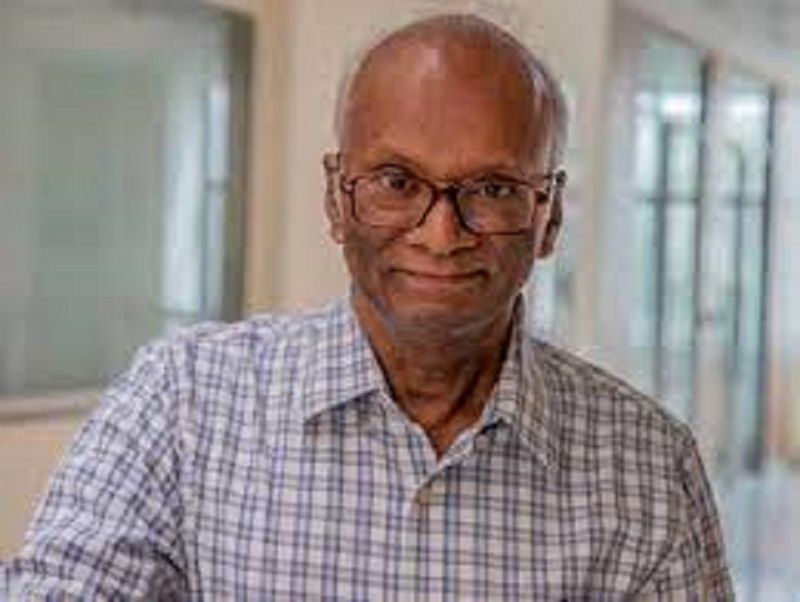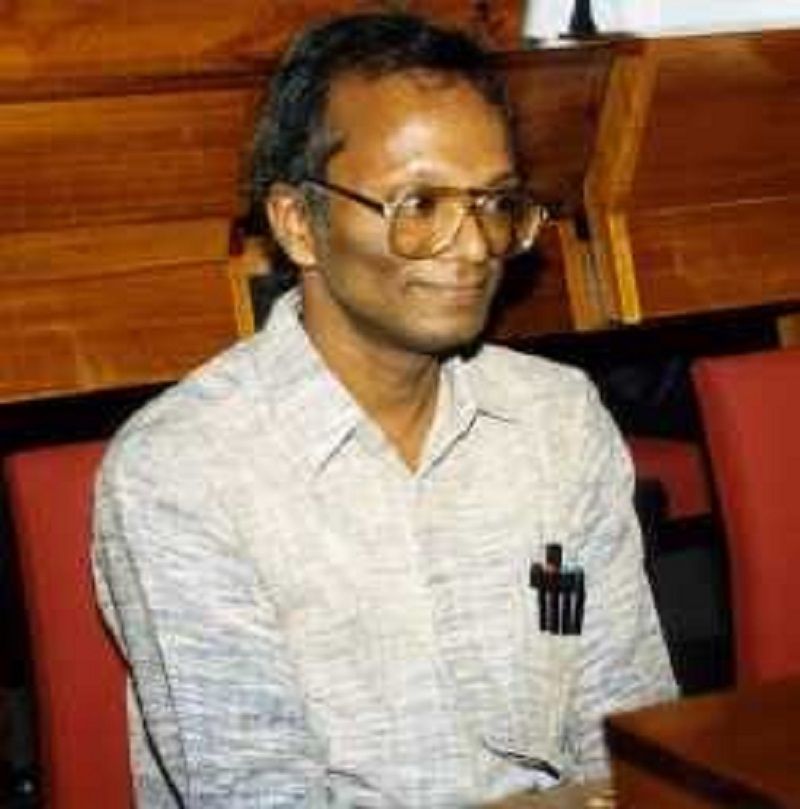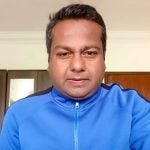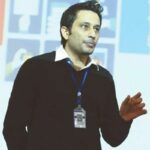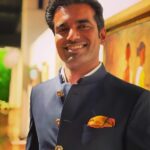Deepak Dhar Age, Wife, Children, Family, Biography & More
Quick Info→
Wife: Manju
Hometown: Pratapgarh, Uttar Pradesh
Age: 71 Years
| Bio/Wiki | |
|---|---|
| Profession | Physicist |
| Physical Stats & More | |
| Height (approx.) | in centimeters- 165 cm in meters- 1.65 m in feet & inches- 5’ 5” |
| Eye Colour | Black |
| Hair Colour | Grey (Semi-Bald) |
| Career | |
| Awards, Honours, Achievements | • 1983: Young Scientist Medal of the Indian National Science Academy • 1991: Shanti Swarup Bhatnagar Prize by the Council of Scientific and Industrial Research • 1993: J. Robert Schrieffer Prize by the International Centre for Theoretical Physics • 2001: Satyendranath Bose Medal by Indian National Science Academy • 2002: TWAS Prize of The World Academy of Sciences • 2022: Boltzmann Medal • 2023: Padma Bhushan 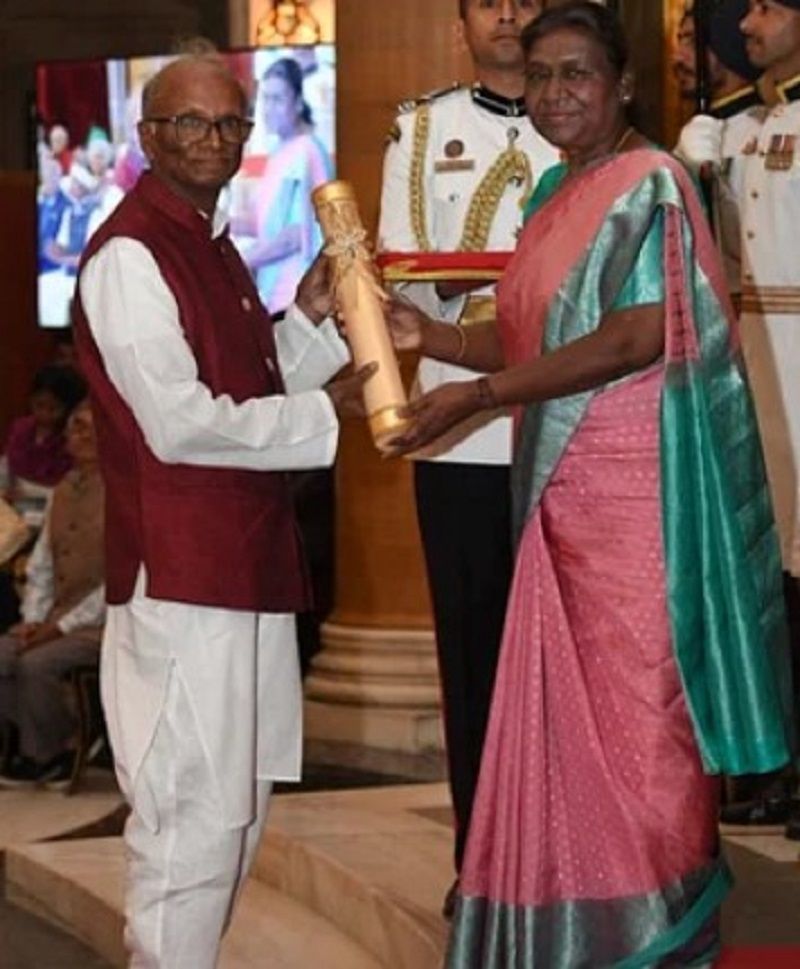 |
| Personal Life | |
| Date of Birth | 30 October 1951 (Tuesday) |
| Age (as of 2022) | 71 Years |
| Birthplace | Pratapgarh, Uttar Pradesh |
| Zodiac sign | Scorpio |
| Nationality | Indian |
| Hometown | Pratapgarh, Uttar Pradesh |
| College/University | • University of Allahabad (1970) • Indian Institute of Technology, Kanpur (1972) • California Institute of Technology (1978) |
| Educational Qualification(s) [1]IITK | • Graduation in Science • Masters in Physics • PhD |
| Relationships & More | |
| Marital Status | Married |
| Family | |
| Wife/Spouse | Manju |
| Children | He has two children. |
| Parents | Father- Murli Dhar Mother- Rama Gupta |
| School | |
| College/University | |
| Educational Qualification | _____ [2]citation |
| Religion/Religious Views | _____ [3]citation |
| Caste | _____ [4]citation |
| Blood Group | _____ [5]citation |
| Food Habit | Vegetarian/Non-vegetarian [6]citation |
| Political Inclination | _____ [7]citation |
| Address | |
| Hobbies | |
| Tattoo(s) | |
| Controversies | • _____ [8]citation |
| Relationships & More | |
| Marital Status | Married/Unmarried |
| Affairs/Girlfriends | |
| Marriage Date | |
| Family | |
| Wife/Spouse | |
| Children | Son- Daughter- |
| Parents | Father- Mother- |
| Siblings | Brother- Sister- |
| Favourites | |
| Food | |
| Actor | |
| Actress | |
| Film | |
| Singer | |
| TV Shows | |
| Colour | |
| Style Quotient | |
| Car Collection | |
| Bike Collection | |
| Expensive Things/Valuables | |
| Money Factor | |
| Salary (approx.) | _____ [9]citation |
| Assets/Properties | _____ [10]citation |
| Net Worth (approx.) | _____ [11]citation |
Some Lesser Known Facts About Deepak Dhar
- Deepak Dhar is an Indian theoretical physicist who is known for his research on statistical physics and stochastic processes. In 2022, he became the first ever Indian scientist to be chosen for the Boltzmann Medal which is the highest recognition in statistical physics awarded once every three years by IUPAP, for exceptional contributions to the subject.
- In an interview, he said that this love for Physics started when he read the textbook by Reif where he was attracted by the logical structure of Physics. He first got attracted to the subject when his father bought science books and asked him to read them. His NSTS advisor Vipin Kumar Agrawal used to advise him to read science books other than the textbooks in college.
- In college, he used to attend the ‘summer camps’ conducted for NSTS scholars where he used to attend lectures conducted by eminent scientists and professors. When he joined IIT Kanpur, his classmates were interested in pursuing an academic career which was different from that of Allahabad where everyone was interested in Indian Administrative Services. When he was studying at IIT, he got a chance to interact with lecturers such as HS Mani, DC Khan and Kalyan Banerji.
- When he went to the US to pursue his studies he was picked up by a local host arranged by the student welfare office at Caltech because new students were supposed to stay with the local hosts at their house for two-three days. In an interview, he said that he struggled a lot with the American accents of the professors.
- When he was a college student, he used to enjoy solving simple math problems he saw in magazines. His recreational mathematical problems were published in the Sunday supplement pages of magazines.
- In an interview, when asked about the effect of the education system in India at the school level, he said,
Yes, I have personally experienced this when I was a child, and later when my daughters were going to school. In fact, in our schools, we do not seem to enable the students to think for themselves and grow. Even practical training like writing essays, that should be aimed at developing the ability of expressing one’s thoughts in words, are converted to mindless essays on “The Cow”: The cow is a domestic animal. It has two eyes, four feet,….”. The student is often punished (the marks are cut) if he/she says anything slightly different. I did find a few teachers that were different, but the vast majority were not.”
- He returned to India after completing his PhD and started his career as a research fellow at the Tata Institute of Fundamental Research (TIFR). In 1980, after two years of research, he became a full-time fellow and worked till 1986. In 1986, he was promoted as the reader.
- Before getting retired from the service, he held various positions at TIFR such as an associate professor (1991) and professor grades from G to J (1995–2008). He had a one-year sabbatical at the University of Paris as a visiting scientist from 1984 to 1985. In May 2006, he had a month-long stint at Isaac Newton Institute as a Rothschild Professor.
- He was also a distinguished professor at the Indian Institute of Science Education and Research, Pune. He worked on the statistical mechanics and kinetics of random lattices and his work understands statistical physics and stochastic processes.
- He was responsible for introducing the spectral dimension concept in the studies of fractals and contributed to developing a methodology for determining their critical phenomena using real-space renormalization group techniques which was the first time the mathematical apparatus was used for calculations on nontrivial critical exponents on fractals.
- He developed a new model the Dhar-Ramaswamy model by working with Ramakrishna Ramaswamy to solve the Abelian sandpile model of self-organized criticality.
- He proposed the evolution operator which has since been subjected to studies by other researchers as Dhar directed-site animals-enumeration problem by working on the directed-site animals-enumeration problem using the Bethe ansatz method. He also demonstrated the predominance of slow flipping of isolated unfrustrated clusters in auto-correlation functions and proposed models of metastable glassy states in stochastic evolution.
- Around 113 of his studies have been documented in articles by the online article repository of the Indian Academy of Sciences.
- Since 2005, he works as an associate editor of the Journal of Statistical Physics, a Springer publication, where he worked on the editorial board from 1993 to 1996 and from 1999 to 2002. He is an editorial board member of the Indian Journal of Pure and Applied Physics (IJPAP) of the National Institute of Science Communication and Information Resources (NISCAIR).
- He is a former editorial adviser to Physica A, an Elsevier science journal, and he has been associated with journals as an editorial board member such as the Journal of Statistical Mechanics: Theory and Experiment, Physical Review E and Pramana.
- From 1992 to 1995, he was a member of the Commission on Statistical Physics of the International Union of Pure and Applied Physics and a member of the program committee of the International Centre for Theoretical Sciences.
- On 19 October 2016, he delivered invited speeches and a special lecture on The Curious Relationship Between Physics and Mathematics at the University of Mumbai.
- When he was pursuing his doctoral at Caltech, he held the E. P. Anthony fellowship (1972–73) and R. P. Feynman fellowship (1974–76). In 1990, he was elected as a fellow by the Indian Academy of Sciences. In 1995, he became an elected fellow of the Indian National Science Academy. In 1999, he was elected as a fellow by the National Academy of Sciences. In 2006, he was elected fellow of the World Academy of Sciences. In 2007, he was selected for the J. C. Bose National Fellowship of the Science and Engineering Research Board.
- He was elected fellow of all three major Indian science academies – the Indian Academy of Sciences, the Indian National Science Academy and the National Academy of Sciences, India. Currently, he is a distinguished professor at the Department of Physics of the Indian Institute of Science Education and Research, Pune.
- In 2022, he became the first Indian to receive Boltzmann Medal and shared the prize with John Hopfield.
- He worked on a model of 3D solid melting after completing his studies which came out to be inapplicable.
- He published several papers with a fellow scientist and friend Prof. Mustansir Barma when he was at the Tata Institute of Fundamental Research. He did not take any coaching under any mentor but his fellows helped him to lead his own research.
- When he was part of the TIFR for four decades, he saw many changes there. In an interview, he said that now there is a lot of money spent on science than it was 40 years ago. He further added that people nowadays read much less and write much more, which he thought was not always a good thing.
- In 1990, he solved the sandpile model introduced by three physicists, namely Per Bak, Chao Tang and Kurt Wiesenfeld in a 1987 paper.
- When he was working at TIFR, he used to break down complex concepts into very simple terms. He was known for training and influencing a large number of students and colleagues in pursuing the style of theoretical statistical physics.
- According to one of his colleagues, his desk in the college was always messy and only he was the one who could find the papers on the table. His wife used to come to the office and re-arranged the table but after some days the table would again become messy.
- One of his other colleagues said that he used to give grades very generously which were always in decimal digits. He would give an 8.2 or an 8.53 instead of 8.
- Many of the students taught by him started working as a part of the ICTS (International Centre for Theoretical Sciences in Bengaluru). His students became the best researchers in the field of theoretical physics.
References/Sources:

